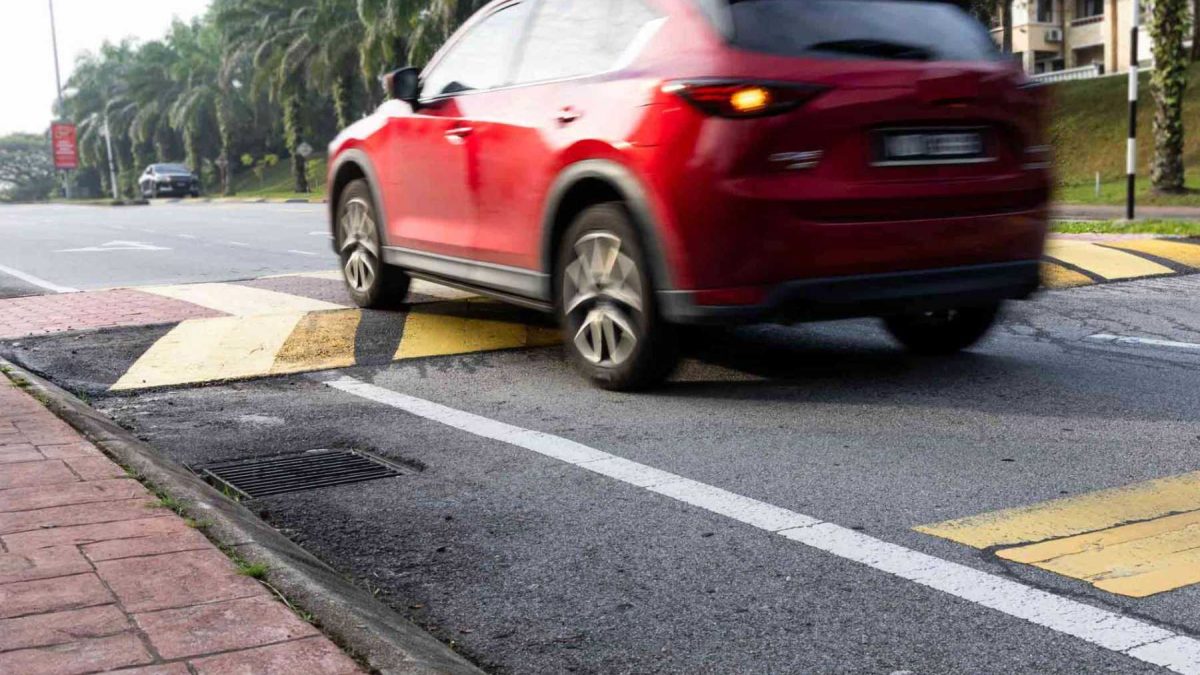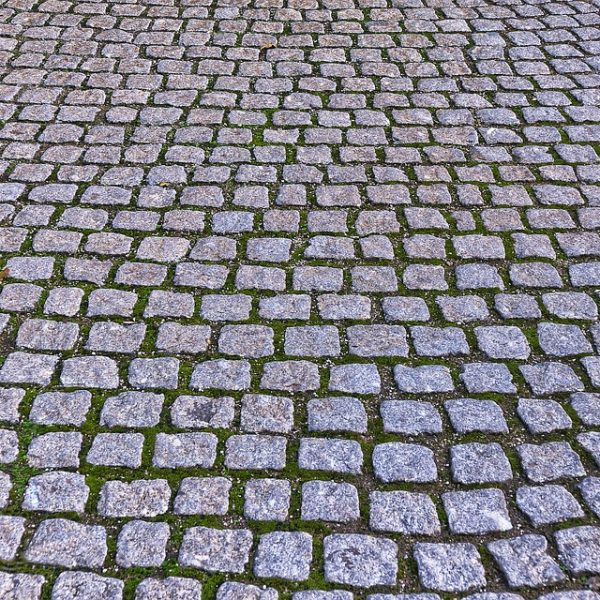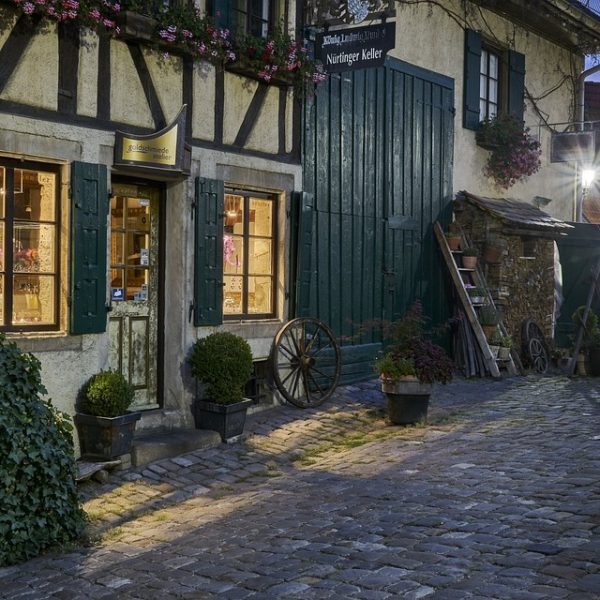
Cobbles and the history of cobbled roads
Cobbled roads are as old as history itself.
Many towns around the world are paved with their characteristic uneven stones. Walking down a cobbled road makes us travel through time and envision scenes of horse carts and bustling markets. In this article, we trace the history of cobbles and cobbled roads, including the materials and techniques used to build them, the role they played in urban development, the ways the cultural evolution affected the use of cobbled roads, and the restoration and conservation processes, as well as some more contemporary paving innovations.
The Origins of Cobbled Roads: A Journey Through Time
Cobbled roads are very old things, they are believed to have been invented by the ancient Romans and the ancient Egyptians. These civilisations discovered that cobblestone was a good and solid material to use to surfice the roads with. The might of the past shows us how these cobbled roads came to be.The ancient cobbled roads somehow transport you to history, they make it very close to you.
The cobblestones have embraced a past of footsteps and wagons, and have become old-fashioned but comforting. Cobbles have lasted a long time in history and feel, in their materiality, like an enduring testament to quality and craftsmanship.
As such, laying cobbles was a complex operation requiring expert craftsmen with the right tools to place each stone by hand until the surface was ready to entertain the vagaries of wind and weather, and the crush of pedestrians and wagons. The finished product was not only fit for the task, but it elevated the cities where it was laid, adding a layer of style to their environments, adorned with varied, regional patterns and designs.
As cities became more populated and modernised, many cobbled streets were covered over, replaced by more even, smoother surfaces such as asphalt. But sometimes in historic areas these old roads are retained and maintained, leaving us with a legacy of the past – and a reminder of another age, when travel was slower and more deliberate.
Materials and Techniques: How Cobblestones Were Made
These roads are masterpieces of craftsmanship: cobblestones are commonly made from granite, basalt or limestone. All these materials come from nature, as do most of the qualities of the stones – for example, the natural durability against traffic and weather.
Cobblestones were initially shaped by hand, pounded down with hammers and chisels and made round. Craftsmen laid them by hand, fitting the stones together tightly so that the finished surface was as smooth and sturdy as possible – and the road would last for generations.
Since then, no doubt driven by the desire to minimise the ever-present human factor, techniques have been developed to speed up cobbled road construction. Mechanical crushers are now used to shape the stones in place of a hefty team of shovellers, maintaining the integrity of the design while saving effort. Thanks to these innovations, official heritage bodies are now able to preserve and restore cobbled streets for the benefit of future generations.
This is no surprise, of course, as the practice of using cobblestones goes back to antiquity. The Romans were the first to pave their roads with the stones, and the arrangement of those cobbles reveals the ingenuity of their road-builders.
Moreover, deciding what kind of stone to use is also necessary. Cobblestone roads can vary depending on the geological formation of the region. In regions where granitic deposits predominate, granite cobblestones are used due to their high durability.
The Evolution of Cobblestone Design Across Cultures
Cobblestone roads are therefore part of the changing landscape and practices of street building in different cultures around the world. From medieval European towns to the megalopolises of ancient Asia, every locale has left its distinct imprint on the craft of cobbling.
Cobbled roads were often built from local materials, thus the diversity of colours and surfaces in Europe cobbled streets – their irregular patterns – not only made European towns look prettier, it also made pedestrian and carriage traffic safer by improving traction on the roads.
But cobblestones in Asia were different, which vary from the West and often have intricate designs and motifs that reflect the deep cultural heritage of the region. These astounding works of art depict the craftsmanship of the artisans who laid it down, transforming the streets into majestic tapestries of history.
Perhaps the most intriguing element of cobble design spanning cultures is the ubiquitous – and unconscious – weaving in of symbolism. Streets in many European towns are ‘laid out’ in geometric patterns to thwart the passage of evil spirits, paved with mosaics depicting folkloric folktales, streets that were not only practical but once also mystical.
Likewise, in some Asian cities, cobbles on the streets had designs carved into them symbolising prosperity, longevity and good fortune. The stones chosen and patterns laid out to be walked on were thought to bring prosperity to those who used them. Portous de Sa received his ‘blessing’ of the cobbles through his act of magical replication.
The Role of Cobblestones in Urban Development
Cobbled roads were followed by cobbled cities: they dictated the way that cities were built and laid out, and created a distinctive urban landscape. Cobbled roads were frequently the way goods were traded, the routes that connected markets and enabled commerce.
There was a practical aspect to the rugged surface of the cobbles too. The bumps helped to break up heavy raindrops, so that they lapped back into the channels without forming puddles. This was a critically important feature, given the many centuries before the development of modern infrastructure that could have dealt more effectively with rain run-off.
And world, the old cobblestones remain in the DNA of manmade cities, lending them a timeless aura, evoking a sense of nostalgia and fuzzy affection for a past that most people never personally knew. From cities in North America to the Old World, reserving these relics is an attempt to hold on to what was long ago paved over.
Cobblestones are an ancient component of urban development. Ancient Rome and ancient Greece had cobblestone streets, dating back thousands of years. The stones were crafted by hand and then carefully laid down by masonry experts, creating a roadbed resilient to heavy traffic and lasting for decades, or even centuries.
Their most valuable quality was their ability to absorb the excess heat of the day and release it at night, making them into miniature microclimate makers for the city. This open natural cooling of city streets was particularly appreciated in oppressively hot summers.
Restoration and Preservation of Historic Cobblestone Streets
Cobblestone streets, and the beauty and heritage that comes with them, do need to be kept in their most pristine state. Restoration work is research-intensive to replicate the appearance of the original design, using traditional techniques and materials whenever possible.
Dedicated craftsmen and conservationists keep these streets as they were. When worn or damaged stones are detected, they are scooped out and a new stone, perfectly conformed to the pattern, inserted, preserving the integrity of the cobbled road for generations to come.
Another aspect of cobblestone streets that is interesting to me is that the stones have been carrying out human history for centuries. Each stone has borne the tread of centuries of two – and four-legged transportation. Every one of these stones has recorded the passage of countless hooves and vehicle tyres.
Furthermore, the artisanal labour it took to build cobblestone streets, paved stone by stone, with no heavy machinery, day after day, is worth preserving. This is an artisanal testament to past skills and ingenuity that we should not let escape the past.
Modern Innovations in Cobblestone Road Construction
While people still like the old look of a cobblestone road, technological advancement in road construction has brought new materials and methods into the picture. Now, asphalt and concrete are more commonly used because they are a smoother surface and are lot cheaper.
Nonetheless, the cobblestone road is not entirely a thing of the past. In the face of the trend toward smooth concrete, many cities have turned to the cobbled street as a source of cultural heritage, protected in pedestrianised areas or as foci of historic districts. Moreover, cobble roads can be modernised, with the application of new technology to improve durability and flexibility of use, allowing it to coexist with the demands of modernity.
Stone by stone, age by age, the pavement became a living map through which the history of the cobbled road coursed its way, from ancient times to the modern era. Next time, as you walk along a cobbled street, take some time to reflect, and recognise the artistry and history, just below the surface.
Key to cobble is the attention to detail, the time spent hand-setting each stone one by one by the skilled workers known as paviours – an art and an engineering technique that remains largely unchanged over time to create a visually beautiful yet long-lasting surface for roads.
Furthermore, cobblestone roads provide climate-friendly advantages. Cobblestone roads do not contribute to the urban heat island effect (often produced by asphalt and concrete). Water drainage is faster because gaps between stones have an advantage over those found in nightmarish infrastructure of pipes. Flood control can be improved. In general, cobblestone roads can help create more sustainable urban environments.
The Genius Innovation of Quick Setting Cobbles
Urban infrastructure construction has dramatically changed in recent years with the development of paving materials. Among these innovations, quick setting cobbles have been recognised as an essential tool, providing multiple benefits for users, designers, and the application. This article will provide a look into the key technical features of quick setting cobbles and its applications in urban construction.
Quick setting cobbles are small pieces of stone with a cube-style shape and a fixed size. They are able to provide a sturdy foundation and are suitable for use in various places. As the name suggests, these cobbles can be used immediately, saving a significant amount of time for construction and offering convenience for workers.
These cobbles are suitable for various applications, such as road construction, seaport development, and the construction of bridges and dams. They are particularly beneficial in urban constructions due to their ability to withstand high traffic pressure. Additionally, they contribute to reducing noise and air pollution in cities.
1. Composition and Manufacture
Quick setting cobbles consist of a composite mixture of high-performance concrete or composite materials engineered for rapid curing and durability through the precise formulation of Portland cement, aggregate, and proprietary formulations of additives. An important aspect of the additives is to accelerate the setting time of the cobbles while increasing the mechanical properties of the cobbles, such as the compressive strength and abrasion resistance.
2. Properties of Quick Setting Cobbles
One of the most important features of quick setting cobbles is the ability to set and reach load-bearing strength in a matter of hours after laying. This is due to chemical accelerators that decrease the time of hydration of cement, allowing cobbles to be functional shortly after they are set. Quick-setting cobbles also have high tensile strength and tolerance to high-traffic areas. Additionally, they are designed to withstand extreme weather conditions, including high temperatures and freezing, with minimal surface deterioration.
3. Installation Techniques
Quick setting cobbles require that a base layer is prepared, which is important for the longevity and performance of the paving, followed by cobbles being laid on that base in a predefined pattern and then bonded with a bonding agent. The quick-setting property means the area can be opened up to traffic or pedestrians much faster than a traditional cobblestone installation, significantly lessening the overall downtime and economic costs.
4. Applications in Urban Infrastructure
Quick setting cobbles are being used more frequently in the construction of new spaces and in the renewal of public spaces in historic districts, pedestrian zones and streets. Their aesthetic flexibility ensures that these paving stones can be used with both historic and contemporary architectural styles – a strategy that makes it possible to preserve the historic integrity of a place while still benefiting from the improved properties of modern materials. They are used to greatly enhance the aesthtic of Speed Tables, Speed Bumps & Humps , and Rumble Strips, especially in historic districts. And because they can be installed so quickly, they are especially useful in an urban setting, where minimising the inconvenience to traffic and pedestrians is of utmost importance.
5. Environmental Impact
On the environmental side of things, quick setting cobbles may have several advantages, especially given that they can be installed more quickly than traditional cobbles and require less heavy machinery on site, thus lowering the carbon footprint of their installation. And many quick setting cobble products are made of recycled materials as well, contributing to a reduction in waste and an increase in resource efficiency in the construction industry.
6. Economic Considerations
How much, economically, does the quick setting cobble make sense? On the one hand, the initial cost of quick setting cobble is greater than the initial cost of other materials. On the other hand, quick setting cobble has the advantage of reducing labour costs, decreasing the length of time of the project, and lessening the interruption of commerce. This results in an economically feasible situation for many municipalities and private developments.
7. Future Perspectives
Quick setting cobbles are set to have an enduring future. Research on improving the ecological footprint and broader applications of quick setting cobbles is ongoing, with developments in materials processing and quick-setting technology likely to enhance both the performance and sustainability of these technologies in the years to come.
The innovation of quick setting cobbles enables numerous important benefits, such as constructive speed, permanence, decorative modifications and environmental footprint. As towns and cities grow, and demand for low-emission, sustainable products in construction increases, quick setting cobbles will become a key material in shaping our cities. The development and application of this material in urbanism will undoubtedly affect the future of urban infrastructure.
















